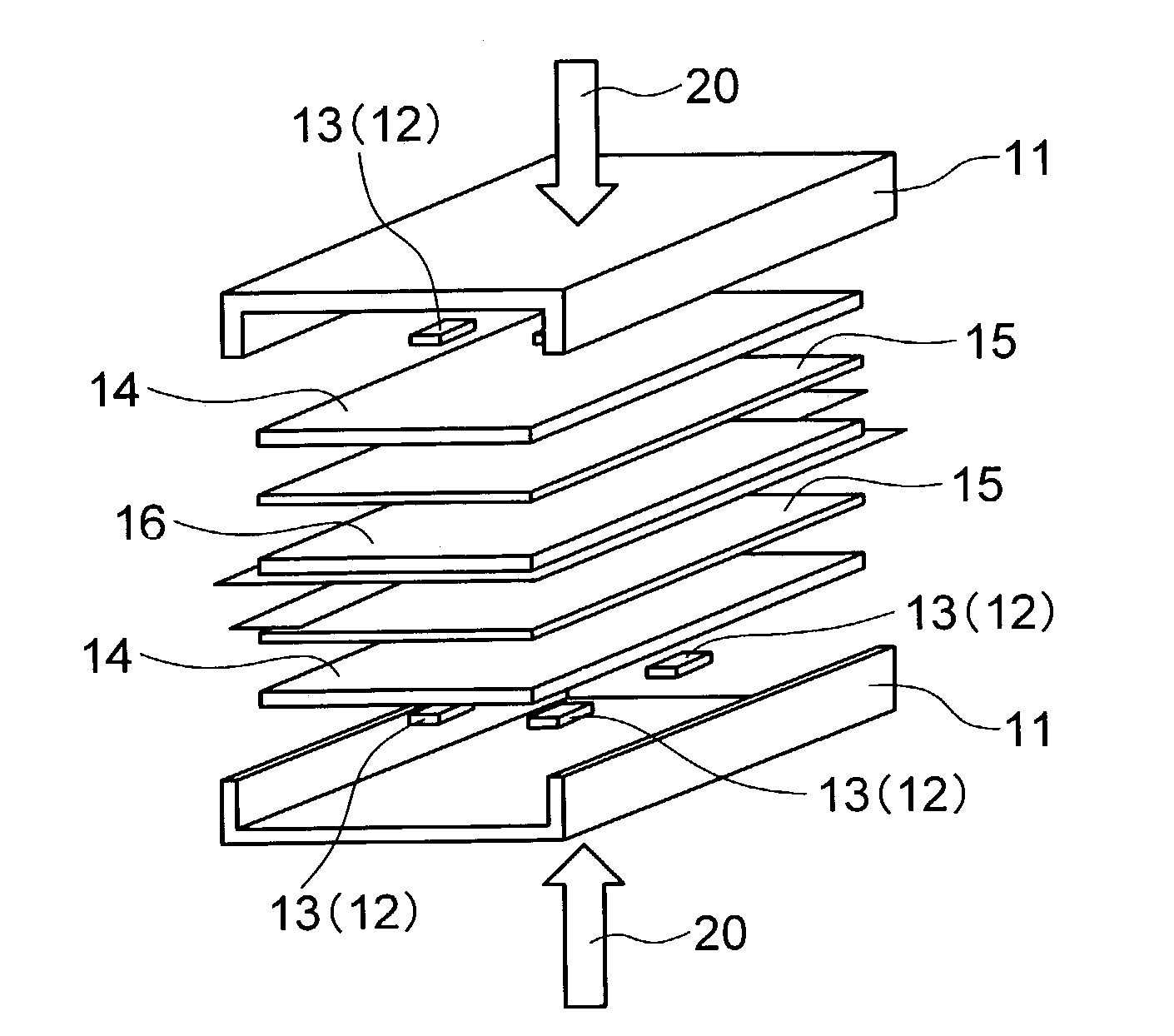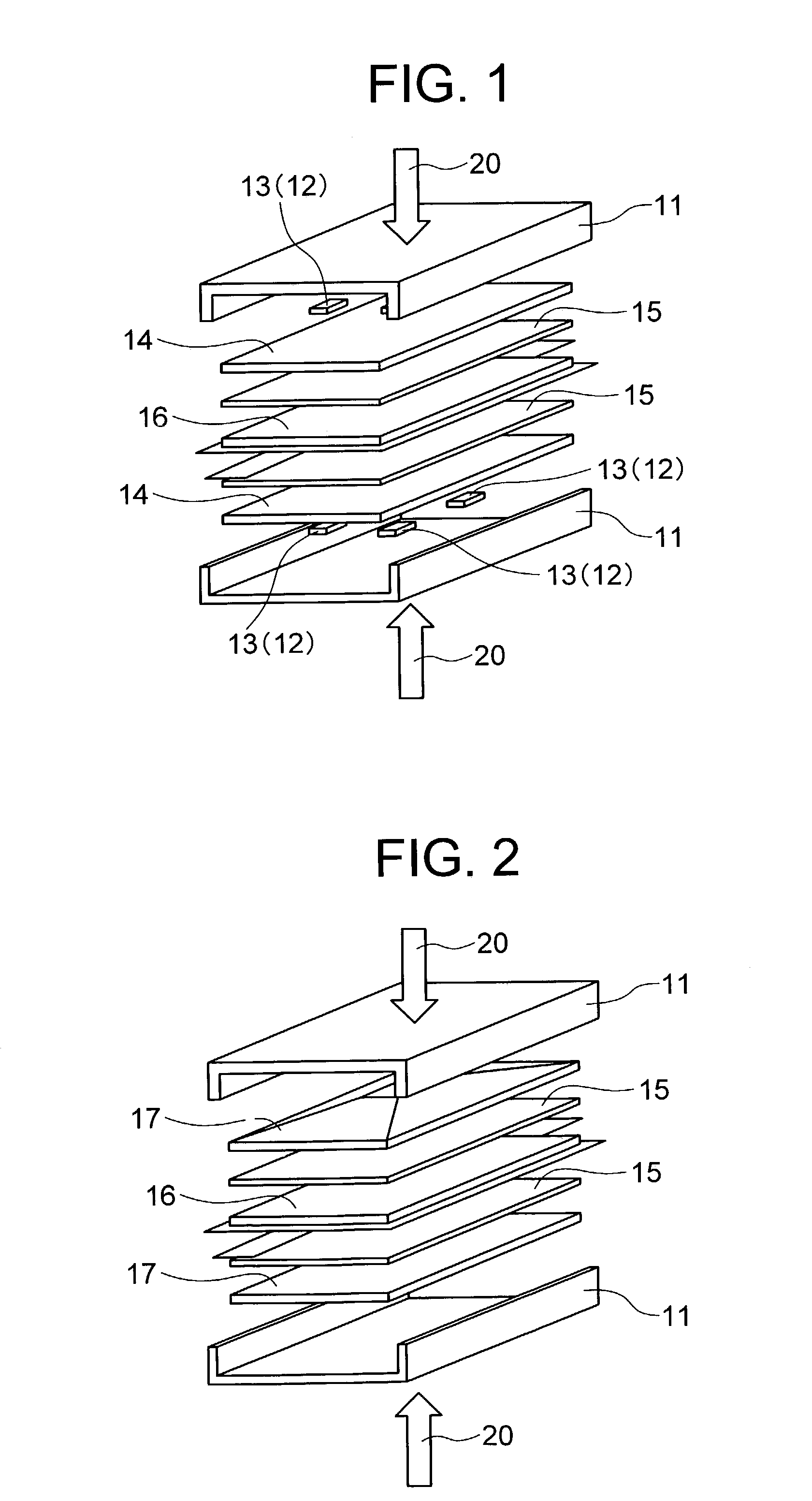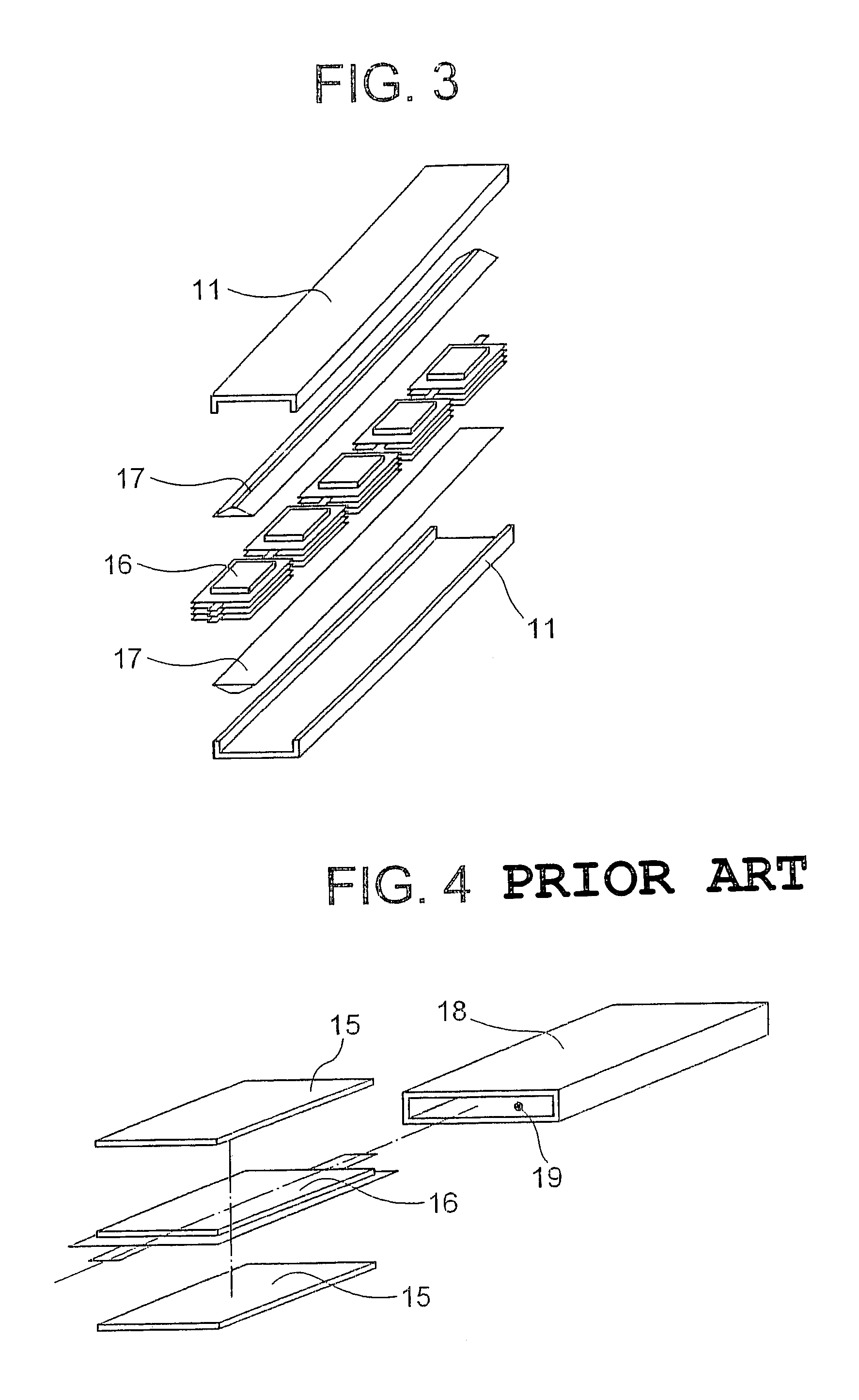Battery module
a battery cell and module technology, applied in the field of batteries, can solve the problems of degrading the performance of the secondary battery, and the electrolytic solution does not in fact effectively prevent the volume increase, and achieves the effect of suppressing the volume increase of the battery cell and reducing the weigh
- Summary
- Abstract
- Description
- Claims
- Application Information
AI Technical Summary
Benefits of technology
Problems solved by technology
Method used
Image
Examples
first embodiment
[0024]Now, the present invention will be described in more detail based on the preferred embodiments thereof with reference to the drawings. Referring to FIG. 1, a battery module according to the present invention includes a battery cell 16 including a laminate overcoat and a battery body having an iterative structure such as described in the conventional battery module, a pair of rubber plates 15 sandwiching therebetween the battery cell 16, a pair of pressure plates 14 sandwiching therebetween the rubber plates 16 and battery cell 15, a pair of housing members 11 sandwiching therebetween the pressure plates 14, rubber plates 15 and battery cell 16, and an intervention member 12 interposed between each of the pressure plates 14 and a corresponding one of the housing members 11 at the central area of the pressure plates 14. The intervention member 12 in this embodiment includes four poles, or rectangular prisms 13 disposed at four apexes of a rectangle. The pair of housing members 1...
second embodiment
[0041]As understood from tables 1 and 2, the samples of the battery module also achieved improvement in the capacity remaining ratio by around 10% at a maximum after 500 cycles compared to the conventional battery module. In particular, an applied pressure as low as 0.1 kgf / cm2 can achieve an improvement of around 5% in the capacity remaining ratio.
third embodiment
[0042]Referring to FIG. 3, a battery module according to the present invention, including twenty battery cells 16 which are electrically connected in series and stacked up to four levels and arranged as a train including five battery stacks.
[0043]The battery cells 16 as a whole are sandwiched between a pair of pressure plates 17 having a part of pyramid shape, which are sandwiched between a pair of housing members 11. The external force 20 applied to the battery module causes battery module to wrap so that the pressure plates 17 and a corresponding portion of the housing 11 are contact with each other at a peripheral area as seen in FIG. 6. The battery module has excellent characteristics after the charge and discharge operation, and has a smaller weight due to the resin material used for the battery module.
PUM
| Property | Measurement | Unit |
|---|---|---|
| thick | aaaaa | aaaaa |
| thick | aaaaa | aaaaa |
| thick | aaaaa | aaaaa |
Abstract
Description
Claims
Application Information
 Login to View More
Login to View More - R&D
- Intellectual Property
- Life Sciences
- Materials
- Tech Scout
- Unparalleled Data Quality
- Higher Quality Content
- 60% Fewer Hallucinations
Browse by: Latest US Patents, China's latest patents, Technical Efficacy Thesaurus, Application Domain, Technology Topic, Popular Technical Reports.
© 2025 PatSnap. All rights reserved.Legal|Privacy policy|Modern Slavery Act Transparency Statement|Sitemap|About US| Contact US: help@patsnap.com



